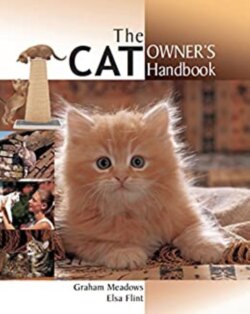Читать книгу The Cat Owners Handbook - Graham Meadows - Страница 32
На сайте Литреса книга снята с продажи.
Pedigree cats
ОглавлениеDepending on where you live, you may have a choice of 40 or more pedigree breeds, ranging from long-haired cats such as the Chinchilla to sleek shorthairs like the British Shorthair or the Foreign (also called the Oriental). If you fancy something rather different, you can opt for a Norwegian Forest Cat, a Turkish Van or a LaPerm. Within some of the breeds (such as the longhairs or Persians) there is a wide range of coat colours, perhaps as many as 50. There are plenty of books and Internet sites that list and describe these breeds and varieties, so if you are thinking of getting one of them, do your homework first.
Remember, too, to talk to your veterinarian. Vets get to see many of the health and behavioural problems that arise in the local cat population, and have a good idea of any pitfalls. They know which breeders are reputable and which are not, and while they may not be willing to name the latter they can certainly steer you clear of them.
One advantage of choosing a pedigree animal is that you should be able to get a good idea of what the mother, and possibly the father, is like. Reputable breeders are happy for you to visit their breeding cattery and inspect their animals for temperament and health. Avoid a breeder who makes excuses and won’t let you view the parents or give you sufficient information.
Just as individual cats vary in their temperament, so do the various breeds. For example, some longhairs (such as Persians) are friendly, comparatively inactive and enjoy nothing more than a cuddle on a warm lap. Others tend to be rather aloof and object to too much handling. The Siamese and Foreign (Oriental) breeds are far more demanding and independent. Don’t confuse such perfectly normal ‘cat attitude’ with poor temperament, though, which is often expressed as aggression. Some pedigree animals have a very poor temperament, caused through selection for their physical appearance with regard to little else, so watch out for it and don’t select any animal that comes from such stock.
Cats that have obvious physical defects, such as in-turned eyelids (particularly prevalent in some Persian and exotic varieties) should also be avoided. If a breeder tells you that this condition is normal for the breed, be wary, because while runny eyes or laboured breathing may be acceptable to some breeders, both are a potential health problem. If you are in any doubt, talk to your veterinarian first, or purchase the animal subject to a health check.
The Korat is a very old breed, native to Thailand (where it is known as the Si-Sawat).
